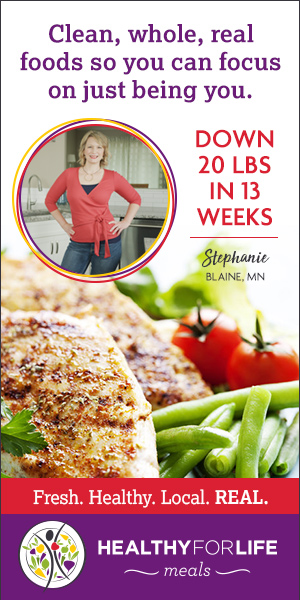Our best advice to lose 20 kilos as long as possible
Whether it’s 5 kg, 10 kg or 20 kg: losing weight is always an extremely difficult task. And the more kilos you lose, the higher you set the bar, and it takes more time. However, as we know, when you lose weight slowly, the effort is much more effective and especially durable than a fast diet. So here are our best tips for REALLY losing weight.
You want to lose 20 kg or even more? First of all, one thing to know: it will (and must) take several months to get there. And for your slimming challenge to work, you must plan your weight loss and above all not act despite common sense. It is not enough to deprive yourself for a while, you have to learn to eat better for example, perhaps adopt a better lifestyle and this requires time for habits to change.
First thing to do to lose your 20 kilos: stay motivated, keep your eyes on your goal and try to get as much support as possible.
Nutritionists are unanimous: if you currently have a BMI around 30, it is much safer to get help from a health professional to lose a lot of weight.
If you want to lose 20 kg (or more) by yourself, then follow these tips now. At first, you may lose weight quite quickly, as if the kilos were easily lost. But beware of the famous yo-yo effect, and the weight that comes back faster than reason! Weight gain is much easier for those who have just lost weight than long-term loss. Because the fat cells have reduced but not disappeared.

Here is what you need to do to lose weight sustainably, and maintain it over the long term:
Change your diet!
If you really want to lose weight and stabilize it, then you will have to change your lifestyle in the long term.
Silke Restemeyer, an expert with the German Nutrition Society (DGE), confirms this: “A fast and classic diet of deprivation leads to short-term weight loss but, to permanently lose weight, you have to change your dietary habits and opt for a slow, natural and progressive weight loss.
More specifically, she recommends losing a maximum of two kilos per month, and no more than 500g per week.
Changing your diet to a more balanced diet instead of an express diet has three advantages:
- you eat to satiety,
- with all the necessary nutrients,
- and you modify your metabolism (without slowing it down, as is the case with radical diets that affect food deprivation).
- Once you have reached the desired weight, it is on how to feed yourself, on your nutritional balance that you act above all and therefore, you stabilize your weight, which becomes your fitness weight.
No (too) prohibitions, no more management!
For the change of diet to work permanently, it is important not to ban food.
Silke Restemeyer tells us: “The key to weight loss is above all to ingest the right amount of food at the right time – so in principle, anything is possible.”
In other words, we still translate what is right to do:
- low-calorie foods such as vegetables, fruit or lean dairy products can be eaten several times a day,
- foods high in calories such as processed foods or sweets should be eaten as rarely as possible and in small portions (once a week max),
- and don’t forget the slow sugars like legumes (rather at breakfast) and protein intakes that guarantee satiety and nourish muscle mass (what’s left when you lose fat what!).
Priority Tip: Be sure to include vegetables with each meal. And half of your plate, even more in the evening. Be careful to reduce the meat, especially if it is red meat (so fat). Be careful, the gratin is not strictly speaking a vegetable…
To help you vary your menus, even protein source foods.
Your daily food with the food day
Sugar and burger addicts, you for whom eating a balanced diet seems boring, learn to vary the menus and open your chakras! Food curiosity is your next challenge to discover the foods that will please you and benefit your body!
To identify your bad habits and fight them successfully, keeping a food journal will help you a lot. Don’t look up to the sky, rigour is your ally, and you must give yourself ALL the means!
This journal, you will keep it for about a week. Be super honest with yourself and write down everything you eat for 7 days, which will allow you to estimate how many calories you have consumed during each day.
Quickly, this will allow you to identify the weak points of your previous feeding mode… which is now time to change.
A word of advice: If you don’t want to write everything down on paper, there are now applications that take over for you. Our favorite is American Chronometer, but you can also use MyFitnessPal or Runtastic Balance.

The right foods, the right nutrients
The less calories a food contains, the more you can eat. Well, that’s the theory roughly because in the detail, calories are not the only things that count, otherwise you just have to eat an MArs for breakfast and hop!
In fact, the quality of the food we ingest, its glycemic index (see our article) and the time it takes for the body to digest it is very important.
Vegetables and fruit are perfect, of course, because they contain a lot of fibre, vitamins and minerals.
As for vegetables, take care of the way they are cooked if you do not eat them raw. So just crunchy steamed vegetables are ideal. And it is better to drizzle olive oil or a lick of butter on it than to cook it with fat, which the vegetables will soak in.
Similarly, prefer fresh and whole fruit. Indeed, it is important to know that fruits contain sugar and that it is better to eat them with their fibers, and their unaltered vitamins than in juice (high sugar level, high glycemic index also and loss of vitamins).
Good to know: when you eat a peeled orange, you only eat one. If you prepare it in juice, you will tend to squeeze two or three to fill your glass. BIlan = no more sugars!
These foods can be consumed several times a day in good conscience:
- vegetables
- crudités
- fresh fruit
- lean dairy products
- whole whole wholemeal wholemeal foods (bread, pasta, rice)
These foods can be on the table several times a week:
- legumes
- lean meat
- lean fish
Take your measurements, rather than relying solely on the scale
The kilos is one thing, but your success doesn’t depend on your scale alone. Indeed, significant successes can be measured with your favorite clothes for example. A pair of darling jeans can be used as a “standard meter” to measure the space created in the thighs, buttocks and waist circumference.
If you are really a perfectionist, you can record your measurements in your diary (taking care to know at which level you record your measurements). Sometimes, we lose fat mass to dry mass (muscle) and this is less obvious on the scale than in the waist circumference!



